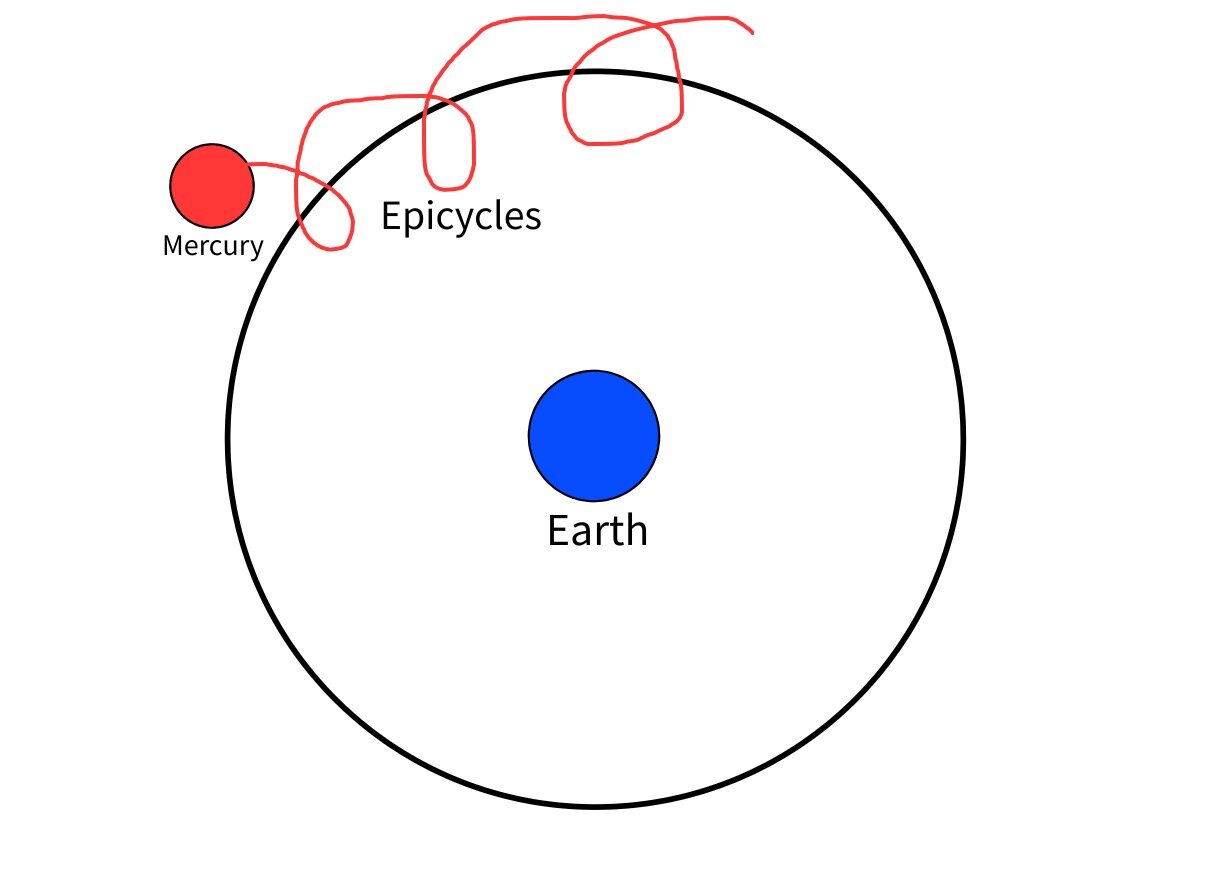What Does it Mean When Mercury is in Retrograde?
I’m back! I wanted to return with a topic that always baffled me until I really took the time to understand it. I’ll continue the Reading Science Research series next week. What does it mean when a planet is in retrograde? Why does everyone talk about it? How does it affect our lives?
I love using silly metaphors to illustrate scientific concepts (if you haven’t figured that out by now). Today’s metaphor is a fun one.
Imagine you really like going out at night, finding a quiet place to sit in the dark, and reading a book (with a light or on your phone, obviously). One night, you drive to a local running track and set up your camping chair right in the middle of the the oval track, which is also a soccer field. You sit down and pull up the book you’re currently enjoying.
Before you get comfortable, you notice that someone else parked their car next to yours. They jump out of their car in full running gear, including one of those weird hats with LED lights on the front (affiliate link). They walk onto the track and all you can see is that little light moving in the dark. You expect you’ll see that little light make a sweeping curve across your field of view every couple of minutes as the runner goes around the track. It shouldn’t be too distracting.
For graphic design inquiries, email me at robin@stemsmartconsulting.com.
Except, that’s not what happens. The little light isn’t just going from right to left, disappearing for a bit, and doing the same thing again. It sort of…zig zags? The light is going right to left, then right to left, back and forth, over and over again. Without even slowing down! The light makes a complete zig zag back to its original starting point in about a minute or so. Slow zig zags. It must be some weird running drill you’ve never heard of before. Interesting. You open up the stopwatch app on your phone to see how long each zig zag is, so you can google it later.
After a few minutes, you catch onto the pattern. The runner appears to be going around the track in the right direction (or at least the direction people usually use) for about a minute and then going in the backwards direction for about a minute. Weird. What search terms would you even use for that? “Running backwards and forwards?” “Running back and forth?” “Running zig zags?”
You’d rather get back to your book than keep googling fruitlessly, so you head to the Kindle app to get back to the dark YA dystopian fictional world of They Both Die in the End (affiliate link).
But wait! You accidentally click on your map app instead. Before you can close the map, you notice - wait a minute! You’re not in the right place! You parked in the right lot, but set up your chair in the next field over. Hey, it’s dark out and it’s an easy mistake to make.
And the track is all the way over there, where the runner is! Maybe, just maybe, the runner isn’t actually zig-zagging back and forth. Maybe the runner is actually running laps around the track in one direction, but since you’re kind of far away, you only see the light going from right to left to right to left as the runner runs around and around the track. Of course. It seems so obvious now. The runner was never actually going back and forth. The runner was running in an oval, but the light looked like it was going back and forth because it was pretty far in the distance.
At that is how retrograde motion works. Retrograde motion is the apparent backwards movement of something far away.
A long time ago, people thought the Earth was the center of the universe. (If you’ve ever spoken to people, you will not be surprised that they thought this.) Astronomers watched planets appearing to move forwards sometimes and backwards other times. They called this apparent backwards motion “retrograde motion”. A couple thousand years ago, astronomers believed retrograde motion was a result of planets orbiting the Earth in little circles around the main orbital path. These little circles were called epicycles.
In the early 1600s, Galileo proposed the outrageous idea that the Earth was not, in fact, the center of the solar system. He was subsequently imprisoned for the rest of his life. Astronomers in the next couple hundred years, including Copernicus and Ptolemy, continued to build on Galileo’s model and found that Earth, along with the other planets in the Solar System, orbit around our Sun. The retrograde motion is actually due to the fact that the planets are very far away, orbiting something other than us.
Unlike in my running-track-on-a-dark-night metaphor, Earth is not actually stationary, and all of the distances are much, much bigger than a soccer field. But, Mercury is not actually moving backwards. It only appears to move backwards sometimes because we’re far away and it’s orbiting the Sun instead of us.
Why does everybody talk about retrograde motion? Well, prior to a couple hundred years ago, we thought it was really weird that planets moved backwards and guessed it might have some effects on Earth and its inhabitants. People looked up at the stars and planets, and wondered what they might do. Over thousands and thousands of years, they told stories and made hypotheses and made observations. Many of these stories are still enjoyed today, even if we now know that retrograde motion is an optical illusion due to a misunderstanding of Earth’s place in the universe and doesn’t change anything happening down here on the ground.



